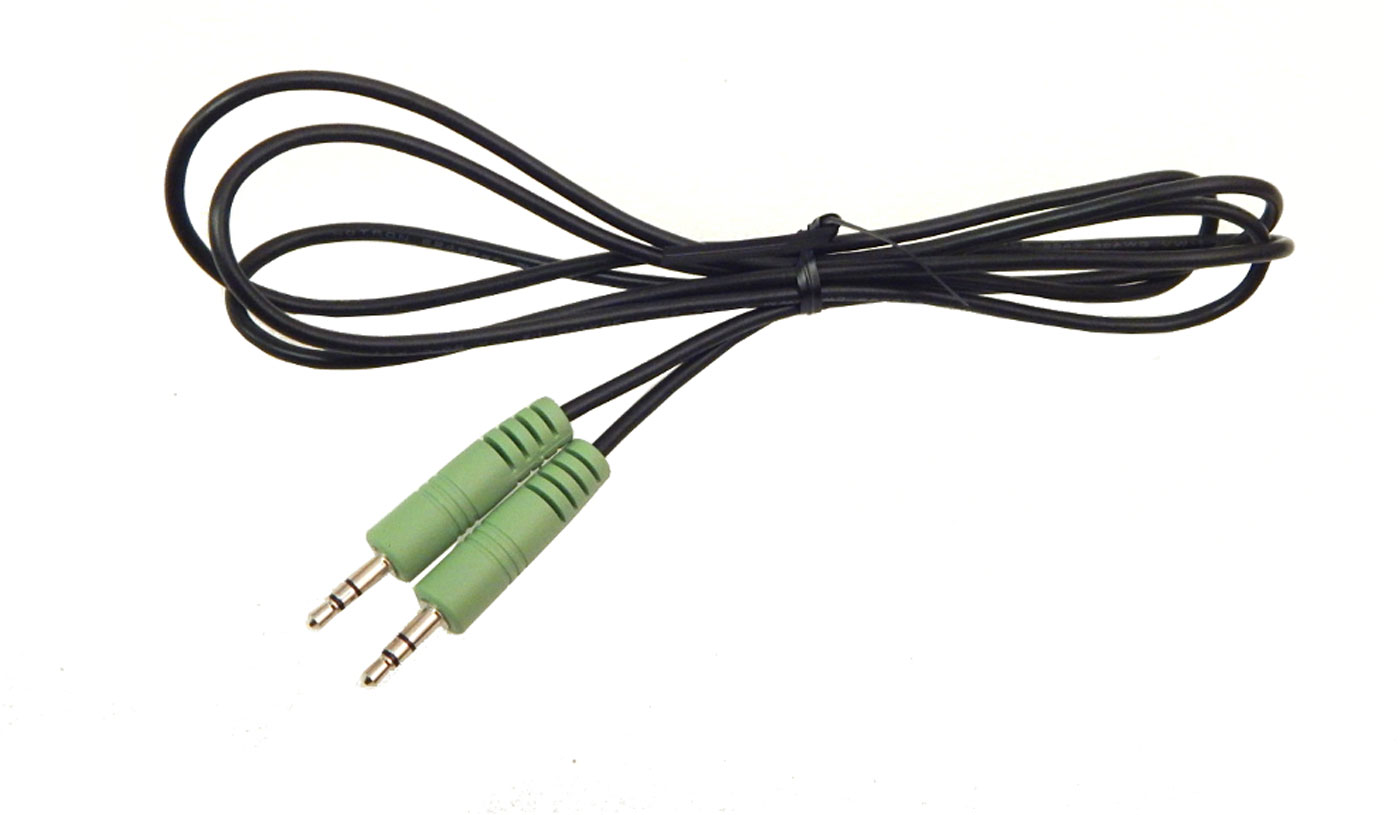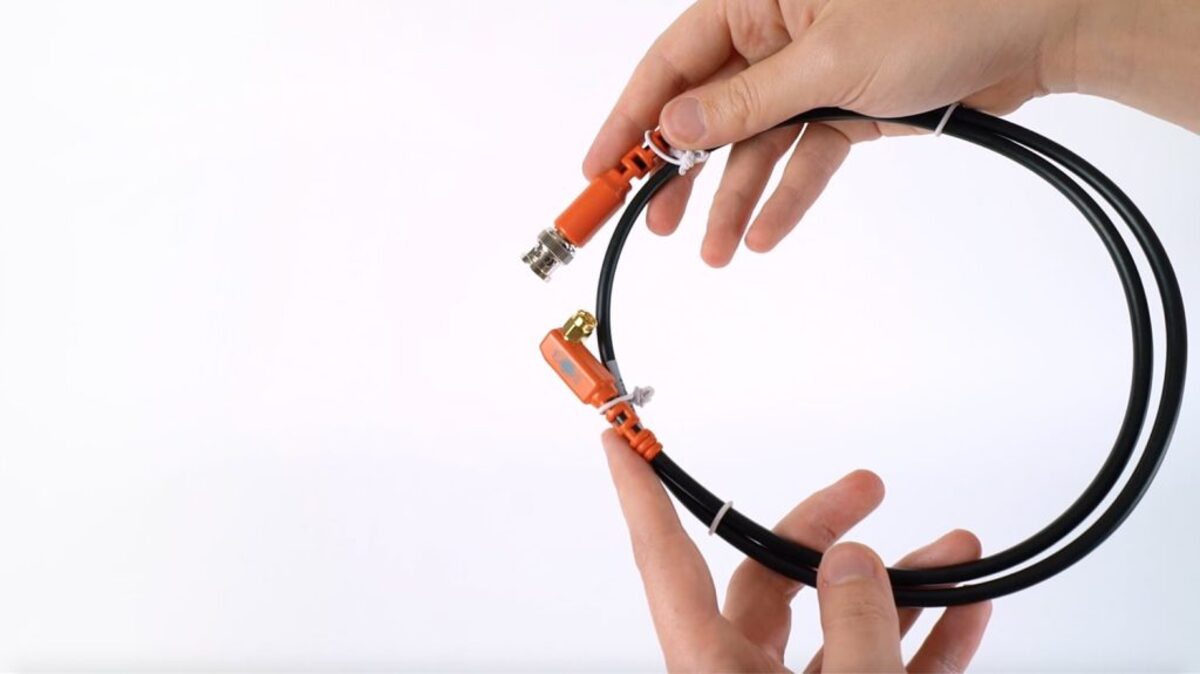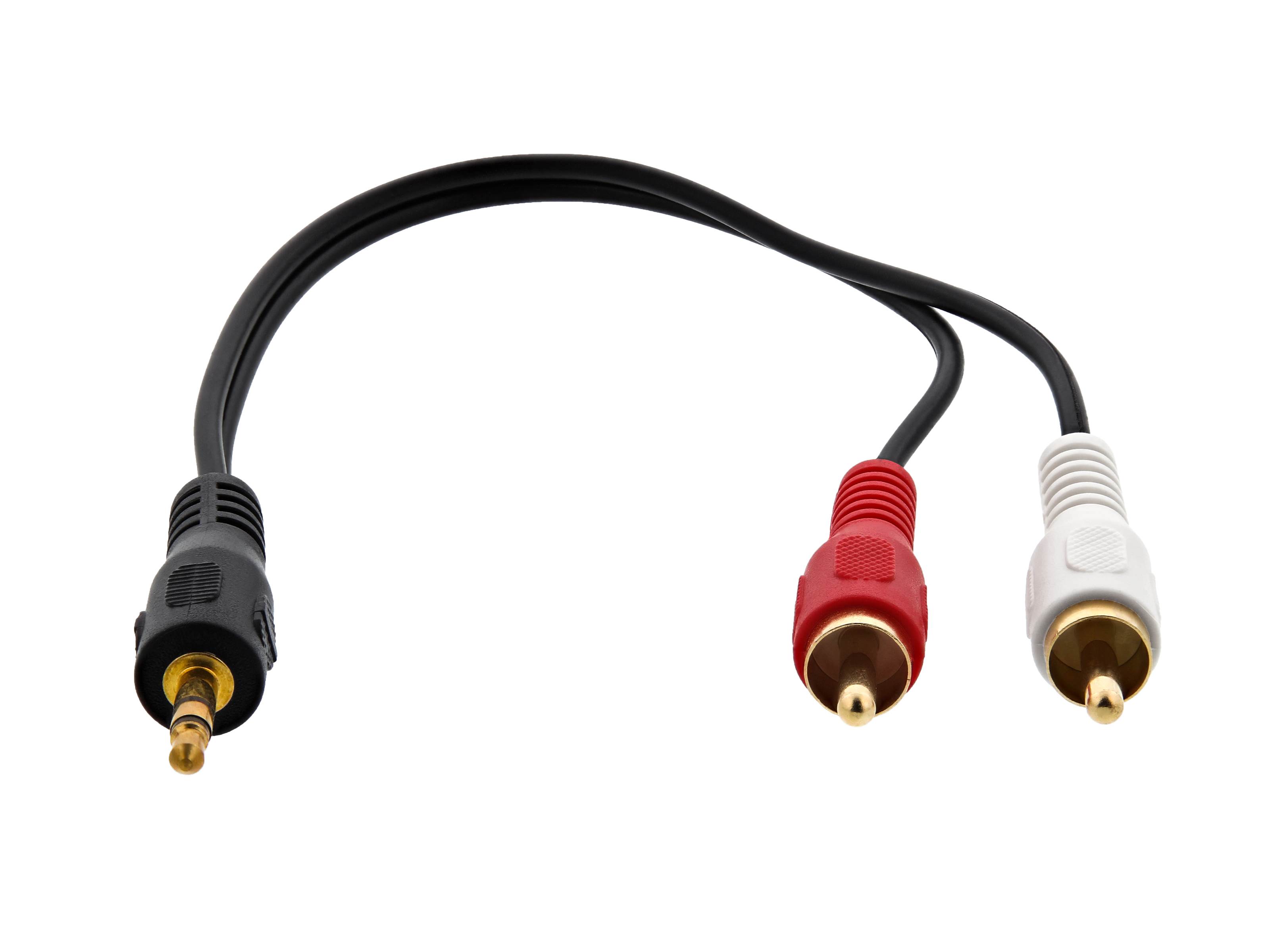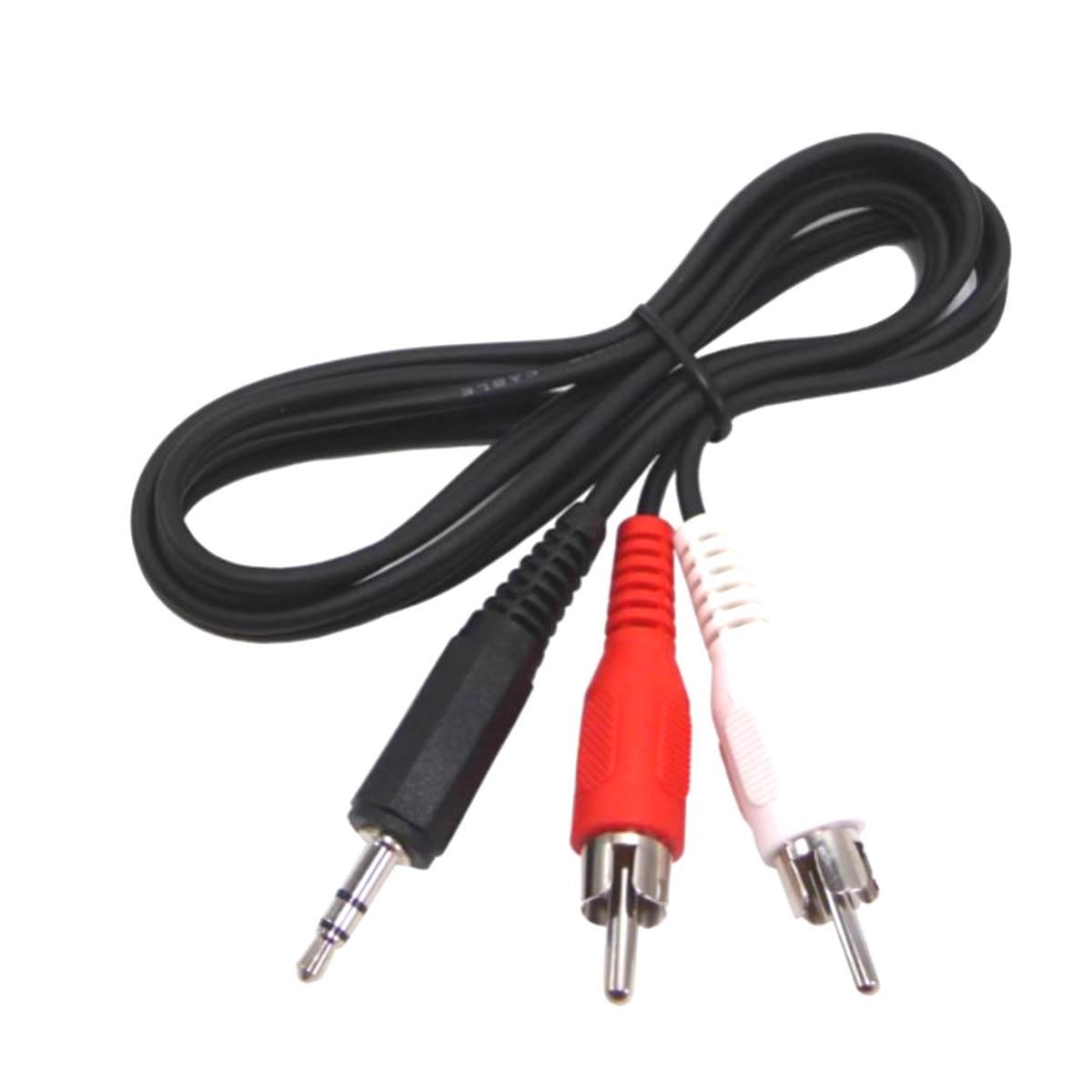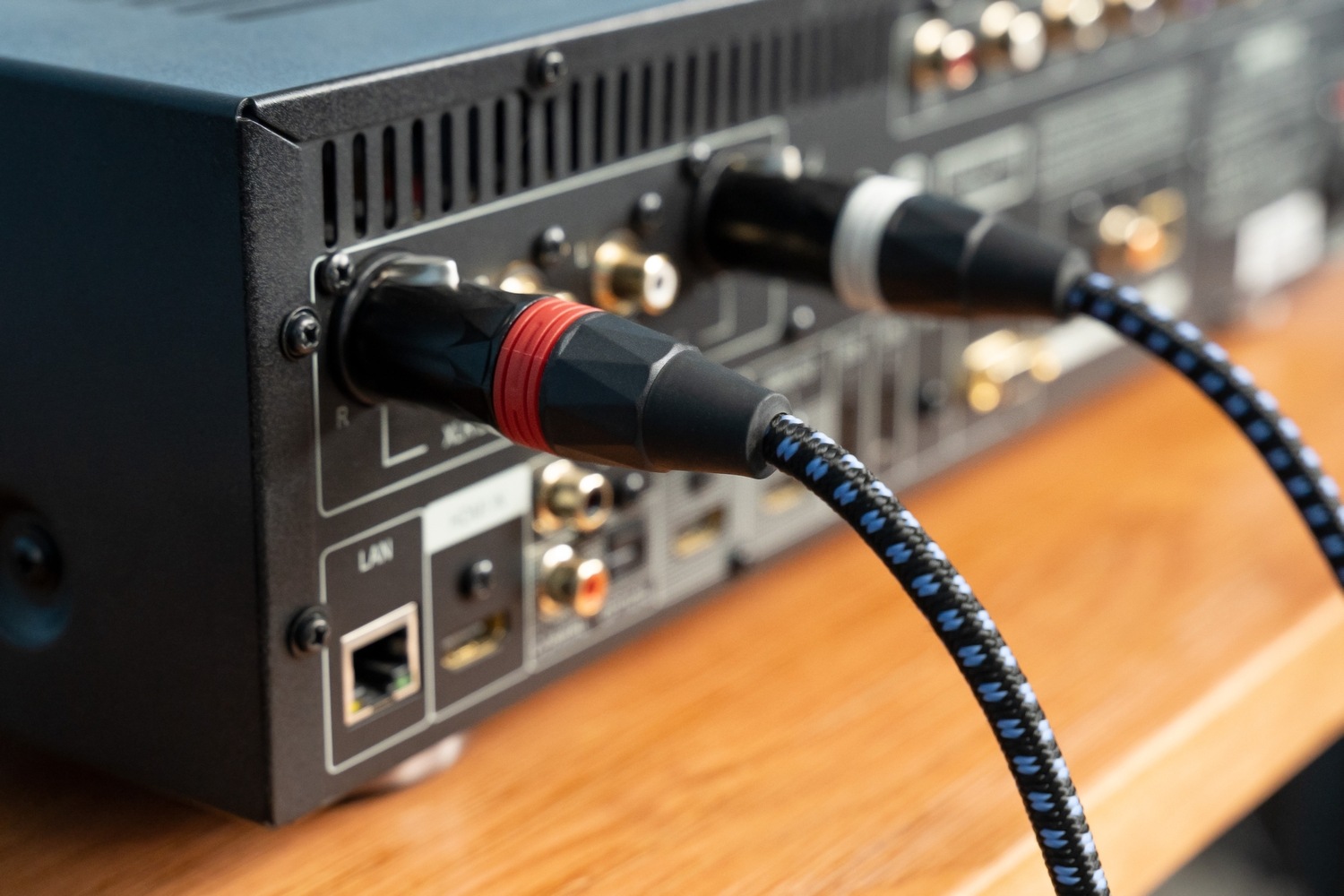Home>Production & Technology>Audio Cable>What Is An RCA Audio Cable
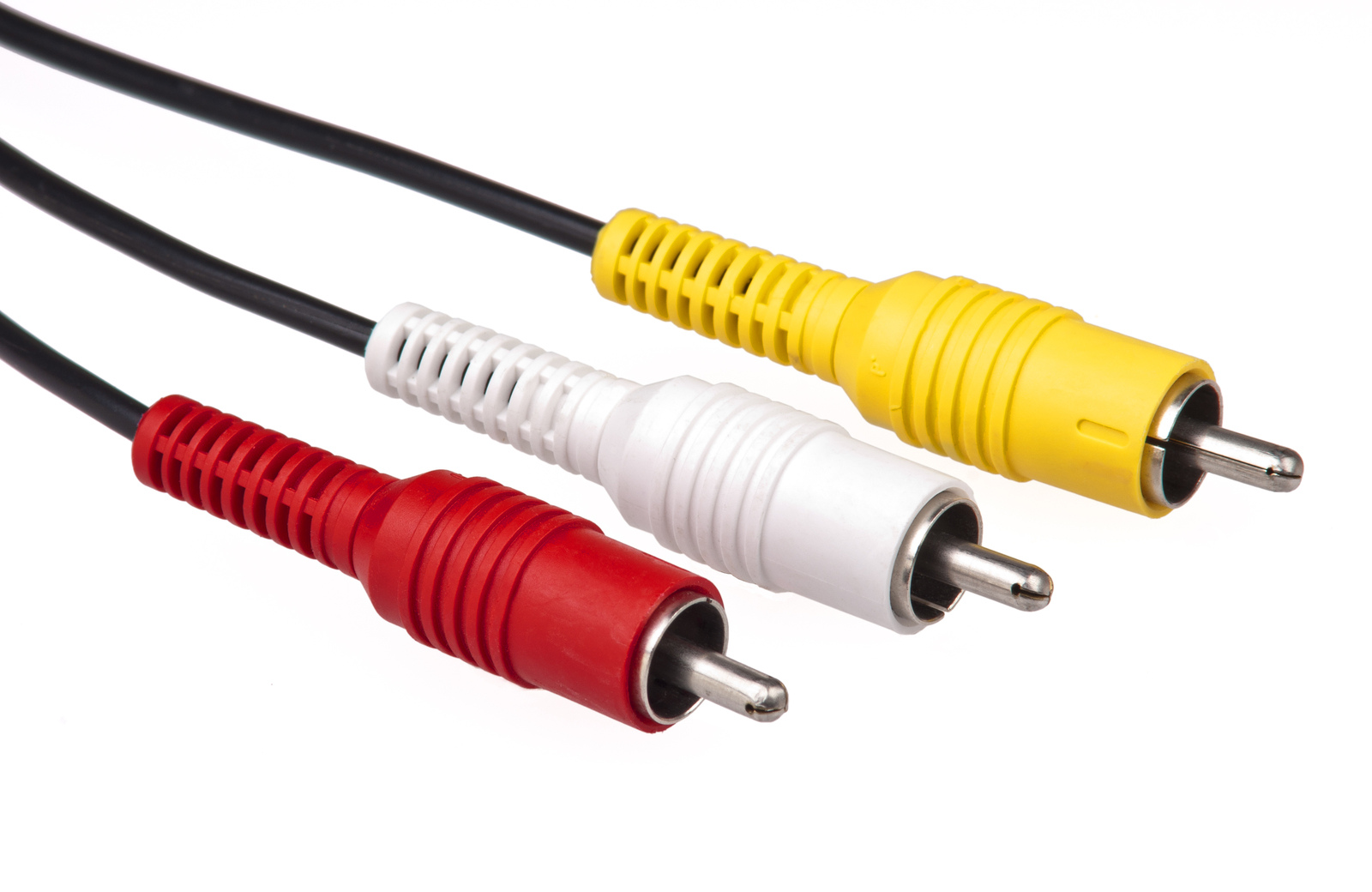

Audio Cable
What Is An RCA Audio Cable
Modified: January 22, 2024
Discover the purpose and function of an RCA audio cable, used to transmit audio signals between devices. Learn about its compatibility and applications in audio setups.
(Many of the links in this article redirect to a specific reviewed product. Your purchase of these products through affiliate links helps to generate commission for AudioLover.com, at no extra cost. Learn more)
Table of Contents
Introduction
Welcome to the world of audio cables! In this digital age, where wireless technology has taken center stage, it’s easy to overlook the importance of good old-fashioned audio cables. But whether you’re an audiophile, a musician, or someone who simply enjoys high-quality sound, understanding and using the right audio cables is essential to ensure optimal audio performance.
One type of audio cable that has stood the test of time and continues to be widely used is the RCA audio cable. You’ve probably seen them before – those cables with red and white connectors that are used to connect various audio devices to speakers, amplifiers, or TVs. But what exactly is an RCA audio cable, and how does it work? In this article, we’ll delve into the fascinating world of RCA audio cables, exploring their types, uses, and the benefits they offer.
RCA, which stands for Radio Corporation of America, is a type of connector that was introduced in the 1940s. It quickly became a popular choice for audio applications due to its simple and reliable design. RCA audio cables consist of two connectors, typically color-coded in red and white. The red connector is used for the right audio channel, while the white connector is used for the left audio channel. These cables provide a stereo analog audio connection, delivering high-fidelity sound between two audio devices.
One of the key advantages of RCA audio cables is their versatility. They can be used to connect a wide range of audio devices, including DVD players, CD players, gaming consoles, turntables, amplifiers, and more. RCA audio cables are also widely used in home theater setups, allowing you to connect your TV to external speakers or a surround sound system.
In addition to their versatile nature, RCA audio cables are known for their durability and ability to transmit high-quality audio signals. They are designed to minimize signal loss and interference, resulting in crisp and clear sound reproduction. The connectors are typically gold-plated to ensure a secure and corrosion-free connection, further enhancing the audio quality.
However, it’s important to note that RCA audio cables are analog cables, which means they transmit audio signals in analog format. In today’s digital age, where digital audio signals are becoming more prevalent, using RCA cables may not be the ideal choice in certain scenarios. But for analog audio connections, especially in older audio equipment or specific audio setups, RCA audio cables provide a reliable and cost-effective solution.
In the next sections of this article, we’ll explore the different types of RCA audio cables, how they work, their common uses, and some helpful tips for choosing and using them. So, let’s dive deeper into the world of RCA audio cables and discover how they can enhance your audio experience!
What is an RCA Audio Cable?
An RCA audio cable, also known as a phono cable or composite audio cable, is a type of analog audio cable that is widely used for connecting audio equipment. The acronym “RCA” stands for Radio Corporation of America, the company that introduced this connector in the 1940s. Over the years, RCA audio cables have become a standard for transmitting audio signals in consumer audio and video applications.
RCA audio cables consist of two connectors, usually color-coded in red and white. The red connector is used to carry the right audio channel, while the white connector carries the left audio channel. These connectors are typically made of metal and feature a center pin surrounded by a metal collar or ring. The cables are designed to transmit analog audio signals, delivering a stereo sound experience.
In addition to the red and white connectors, some RCA cables may have a third connector, typically color-coded in yellow. This yellow connector is used for composite video signals. While the primary purpose of RCA audio cables is to transmit audio signals, the inclusion of the yellow connector allows for the simultaneous transmission of audio and video signals, making RCA cables a popular choice for connecting DVD players, gaming consoles, and other audiovisual devices to TVs or receivers.
RCA audio cables come in various lengths, ranging from a few inches to multiple feet, allowing users to connect audio equipment located at different distances. The cables are typically shielded to minimize interference and maintain signal integrity. The connectors may be gold-plated, which not only adds a touch of aesthetic appeal but also ensures a corrosion-free and reliable connection, optimizing the audio performance.
One notable characteristic of RCA audio cables is that they are an analog connection method. This means that the audio signals transmitted through these cables are continuous, varying voltages that represent the analog sound waves. In contrast, digital audio relies on binary code to represent and transmit audio signals. While digital audio formats have gained popularity in recent years, analog audio connections are still widely used, especially in traditional audio equipment.
It is important to note that RCA audio cables are typically unidirectional, meaning they have a specific input and output orientation. The output end of the cable, usually connected to the audio source, has the male connectors, while the input end, connected to the receiving device, has the female connectors. It is crucial to ensure the correct connection to avoid any audio issues or signal loss.
Overall, RCA audio cables are versatile and reliable connectors that have stood the test of time. They are used in various settings, from home theaters and music studios to live performances and DJ setups. Now that we understand what RCA audio cables are, let’s explore the different types of RCA cables available and how they work in the next section.
Types of RCA Audio Cables
There are different types of RCA audio cables available, each designed to meet specific audio needs and requirements. Understanding the different types can help you make an informed decision when selecting the right cable for your audio setup. Here are some common types of RCA audio cables:
- Stereo RCA Cables: Stereo RCA cables, also known as dual-channel RCA cables, are the most common type. As the name suggests, these cables carry stereo audio signals, with the red connector representing the right channel and the white connector representing the left channel. Stereo RCA cables are widely used in home audio setups, connecting devices like CD players, amplifiers, and speakers.
- Subwoofer RCA Cables: Subwoofer RCA cables are specifically designed to transmit low-frequency audio signals, typically used to connect subwoofers to audio systems. These cables often feature a Y-splitter configuration, with one male RCA connector for the subwoofer and two male connectors (red and white) for the audio source. Subwoofer RCA cables are ideal for enhancing bass response and adding depth to your audio experience.
- Digital Coaxial RCA Cables: Digital coaxial RCA cables are used to transmit digital audio signals. Although RCA cables are primarily analog, digital coaxial cables utilize an RCA connection for compatibility with audio devices that have digital coaxial inputs and outputs. These cables are often used for connecting DVD players, game consoles, and audio interfaces that support digital audio.
- Component Video RCA Cables: Component video RCA cables, sometimes referred to as YPbPr cables, are designed to carry analog video signals. Unlike traditional RCA audio cables, component video cables feature three connectors – red, green, and blue. These cables are used to transmit high-quality video signals, making them ideal for connecting DVD players, Blu-ray players, and gaming consoles to televisions or projectors.
- Composite Video RCA Cables: Composite video RCA cables combine both audio and video signals into a single cable. These cables feature a yellow connector for video and typically red and white connectors for audio. Composite video cables are widely used for connecting older devices like VCRs, camcorders, and gaming consoles to TVs or other display devices.
- Professional Grade RCA Cables: Professional-grade RCA cables are designed to meet the demanding needs of audio professionals, musicians, and recording studios. These cables often feature high-quality materials, enhanced shielding, and advanced construction techniques to ensure maximum signal integrity and reduced interference.
When selecting an RCA audio cable, consider the specific requirements of your audio setup. Evaluate factors such as cable length, cable quality, and the type of audio signal you need to transmit. Investing in a high-quality RCA audio cable can result in improved audio performance and longevity.
Now that we have explored the different types of RCA audio cables, let’s dive into how these cables work in the next section.
How Does an RCA Audio Cable Work?
RCA audio cables work by transmitting analog audio signals between two audio devices. The cable consists of two separate conductors, one for the left audio channel and one for the right audio channel. These conductors, often color-coded in red and white, are shielded to minimize interference and ensure optimal signal quality.
At each end of the RCA audio cable, there are male connectors, which typically have a center pin and a metal collar or ring surrounding it. The male connector is inserted into the female connector on the audio device, creating a secure and reliable connection. The center pin of the male connector makes contact with the center conductor of the female connector, allowing the audio signal to pass through.
When an audio signal passes through an RCA audio cable, it is in the form of an analog electrical voltage. The audio signal is continuous, representing the varying amplitude of sound waves. The audio device sends the analog audio signal to the cable’s input end, which is connected to the output of the audio source. The analog audio signal travels through the cable’s conductors, maintaining its quality as it reaches the output end, where it connects to the input of the receiving audio device.
Inside an audio device, such as a CD player, amplifier, or speaker system, the RCA input receives the analog audio signal from the cable. The device then processes the signal through its electronics, amplifying or adjusting it as necessary, before playing it back through the speakers or outputting it to another audio device.
It’s important to note that RCA audio cables transmit analog audio signals, which differ from digital audio signals. Analog audio signals are continuous waveforms, while digital audio signals are represented as binary data consisting of ones and zeros. Despite the rise of digital audio technologies, RCA audio cables remain relevant for connecting analog audio equipment and ensuring high-quality audio reproduction.
RCA audio cables can transmit audio signals over short or long distances, depending on the cable’s quality and construction. Longer cables may experience some signal degradation due to resistance and interference, so it’s important to use high-quality cables for longer runs or consider using signal boosters or amplifiers.
Overall, RCA audio cables provide a simple and effective solution for transferring analog audio signals between audio devices. They have been widely adopted in various audio setups and applications due to their ease of use, versatility, and ability to deliver reliable audio connections.
Now, let’s explore the common uses of RCA audio cables in the next section.
Common Uses of RCA Audio Cables
RCA audio cables are widely used in a variety of audio setups and applications. Their versatility and compatibility make them an essential component for connecting audio devices and achieving high-quality sound reproduction. Let’s explore some of the common uses of RCA audio cables:
- Home Theater Systems: RCA audio cables are commonly used in home theater systems to connect audio sources, such as DVD/Blu-ray players, streaming devices, or cable/satellite boxes, to AV receivers or soundbars. These cables enable the transmission of high-quality audio from the source to the audio system, delivering immersive sound for an enhanced movie-watching experience.
- Hi-Fi Audio Systems: In traditional hi-fi audio systems, RCA audio cables are used to connect audio sources like CD players, turntables, or digital audio players to integrated amplifiers or preamplifiers. These cables ensure the accurate transmission of audio signals, allowing users to enjoy high-fidelity sound reproduction.
- Studio Recording and Mixing: RCA audio cables have been a staple in professional audio studios for connecting audio equipment, such as audio interfaces, mixers, and studio monitors. They enable the transfer of audio signals between devices, facilitating the recording and mixing process with precision and clarity.
- DJ Setups: DJs often rely on RCA audio cables to connect their turntables, CDJs, or media players to DJ mixers and sound systems. These cables provide a reliable and low-latency connection, allowing DJs to seamlessly mix and transition between tracks.
- Car Audio Systems: Many car audio systems utilize RCA audio cables to connect head units or amplifiers to speakers or subwoofers. These cables ensure the transmission of audio signals with minimal interference, allowing for an enjoyable and powerful audio experience while driving.
- Gaming Consoles: RCA audio cables are commonly used in gaming setups, especially for connecting older gaming consoles to TVs or audio systems. They allow gamers to enjoy immersive audio while playing their favorite games.
- Pro Audio Applications: RCA audio cables are also used in various professional audio applications, such as live sound reinforcement setups, stage performances, and PA systems. They provide a reliable and standardized connection for audio equipment, ensuring optimal sound delivery to the audience.
These are just a few examples of the many applications where RCA audio cables are used. Regardless of the specific audio setup, RCA audio cables are a go-to solution for transmitting analog audio signals between devices, delivering reliable and high-quality audio connections.
Next, let’s explore the benefits and limitations of RCA audio cables to gain a comprehensive understanding of their capabilities.
Benefits and Limitations of RCA Audio Cables
RCA audio cables offer several benefits that make them a popular choice for connecting audio devices. However, it’s also important to consider their limitations in certain scenarios. Let’s explore the benefits and limitations of RCA audio cables:
Benefits:
- Compatibility: RCA audio cables are widely compatible with various audio devices, including DVD players, CD players, gaming consoles, amplifiers, and more. They provide a standardized connection method, ensuring seamless compatibility between devices.
- Reliability: RCA audio cables deliver a reliable audio connection, with minimal chances of signal loss or interference. The cables are often shielded to reduce electromagnetic interference, resulting in consistent audio performance.
- Cost-Effective: RCA audio cables are generally affordable, making them a cost-effective choice for connecting audio devices. They offer reliable audio transmission without the need for complex digital converters or expensive cable systems.
- Easy to Use: RCA audio cables are straightforward to use, as they only require a simple connection between devices. The color-coded connectors (red and white) make it easy to identify and connect the correct channels.
- Analog Sound Reproduction: Analog audio signals transmitted through RCA cables can provide a warm and natural sound reproduction, favored by many audiophiles and music enthusiasts.
Limitations:
- Limited Audio Quality: RCA audio cables transmit analog audio signals, which may not achieve the same level of fidelity as digital audio formats. They are subject to potential signal degradation and interference over longer cable runs.
- Unidirectional: RCA audio cables are unidirectional, meaning they have a specific input and output orientation. Incorrectly connecting them can result in audio issues or signal loss.
- Analog Limitations: While RCA cables are well-suited for analog audio connections, they may not be the ideal choice for digital audio transmissions. If you need to transmit digital audio signals or require multi-channel audio, alternative digital audio cable options may be more suitable.
- Not Suitable for High-Resolution Audio: If you are looking to transmit high-resolution audio formats, such as FLAC or DSD, RCA audio cables may not be the best choice. These formats typically require more advanced digital connections to maintain audio quality.
- Limited to Shorter Distances: RCA audio cables may experience signal degradation over longer cable runs. If you need to connect audio devices located far apart, it’s recommended to use higher quality cables, signal boosters, or consider alternative connection methods.
Understanding the benefits and limitations of RCA audio cables can help you determine whether they are the right choice for your specific audio needs. While they provide a reliable and cost-effective solution for many applications, it’s important to consider the audio quality requirements and the compatibility with your audio devices.
In the next section, we’ll share some tips for choosing and using RCA audio cables effectively.
Tips for Choosing and Using RCA Audio Cables
When it comes to choosing and using RCA audio cables, there are a few tips and considerations that can help you make the most of your audio setup. Whether you’re setting up a home theater system, connecting audio equipment, or utilizing RCA cables for other audio applications, here are some useful tips to keep in mind:
- Quality Matters: Invest in good quality RCA audio cables. Look for cables made with high-quality materials, such as oxygen-free copper conductors and gold-plated connectors. Higher quality cables can provide better signal transmission and minimize signal loss or interference.
- Cable Length: Consider the length of the cable you need. Measure the distance between the audio devices you want to connect and select a cable that is long enough to comfortably reach between them. Keep in mind that longer cables may result in minor signal degradation, so choose the appropriate length accordingly.
- Shielding: Look for RCA audio cables with proper shielding. Shielding helps to reduce electromagnetic interference from other devices or nearby power sources, ensuring clean audio transmission and minimizing audio distortions.
- Check Connectors: Ensure that the connectors on your RCA audio cables are secure and in good condition. Loose or damaged connectors can result in poor audio quality or intermittent connections. Additionally, make sure the connectors on your audio devices are clean and free from dust or debris for a solid connection.
- Proper Placement: When connecting RCA cables, be mindful of their placement. Avoid placing them near power cables or other sources of electromagnetic interference, as this can introduce noise into the audio signal. Keeping the cables away from potential sources of interference can help maintain the integrity of the audio signal.
- Labeling and Organization: If you have multiple RCA audio cables in your setup, consider labeling them or using color-coded tags. This makes it easier to identify which cables connect to which devices, reducing confusion and minimizing the chances of incorrect connections.
- Upgrade if Needed: If you notice any quality issues or limitations in your audio setup, consider upgrading to higher quality RCA audio cables. Upgrading to cables with better construction and improved shielding can make a noticeable difference in audio performance.
- Regular Maintenance: Periodically check the RCA audio cables for any signs of wear or damage, such as frayed cables or loose connections. If you notice any issues, replace the cables promptly to avoid further audio problems.
By following these tips, you can ensure you choose the right RCA audio cables for your setup and optimize their performance. Remember, high-quality cables and proper installation are essential for achieving the best audio experience.
Now, let’s wrap up our exploration of RCA audio cables in the concluding section.
Conclusion
RCA audio cables have proven to be a reliable and versatile solution for connecting audio devices and transmitting analog audio signals. Whether you’re setting up a home theater system, recording studio, or simply connecting audio equipment, understanding RCA audio cables and their uses can greatly enhance your audio experience.
Throughout this article, we have explored what RCA audio cables are and how they work. We’ve discussed the various types of RCA audio cables available, including stereo cables, subwoofer cables, digital coaxial cables, component video cables, composite video cables, and professional-grade cables. We’ve also examined the benefits and limitations of using RCA audio cables in different audio setups, highlighting their compatibility, reliability, and cost-effectiveness.
To make the most of RCA audio cables, we’ve provided some useful tips, such as investing in quality cables, considering cable length, checking connectors, and ensuring proper cable placement. By following these tips, you can optimize the performance of your RCA audio cables and maintain a clean and high-quality audio signal.
While digital audio formats are becoming more prevalent, RCA audio cables still play a crucial role in connecting analog audio devices. They offer a tried and tested method for transmitting audio signals with minimal interference and signal loss.
Whether you’re enjoying your favorite movies in a home theater, recording and mixing music in a studio, or immersing yourself in gaming audio, understanding and utilizing RCA audio cables can make a significant difference in your audio setup.
So, the next time you need to connect your audio equipment and achieve high-quality sound reproduction, consider the benefits and versatility of RCA audio cables. With their simplicity, reliability, and compatibility, RCA audio cables continue to be a valuable tool in the world of audio connectivity.

